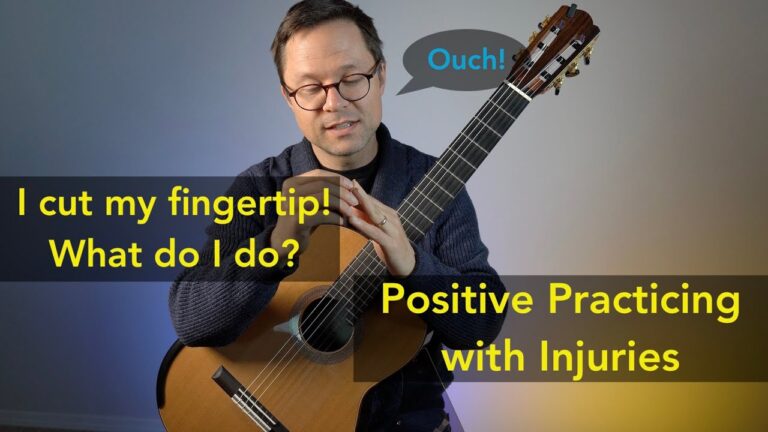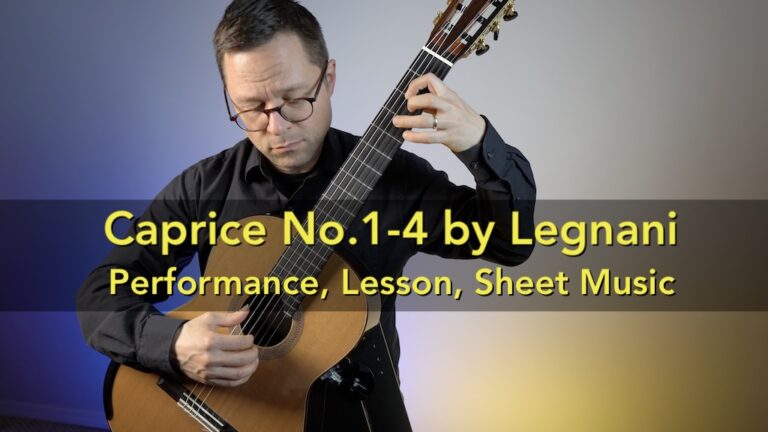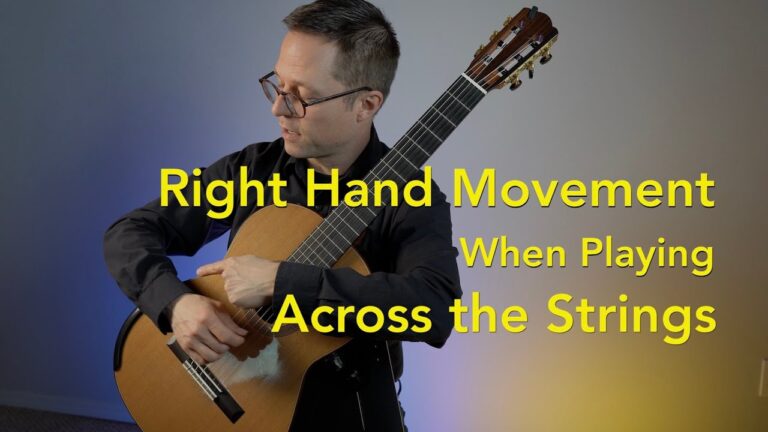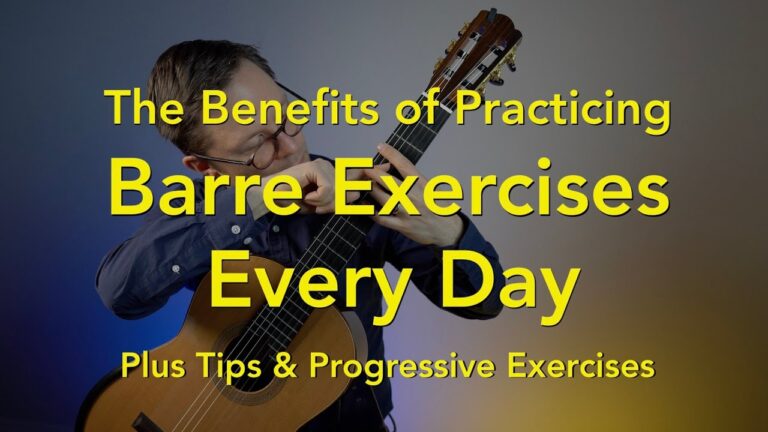This lesson comes from my Method Book Volume 2.
Below is the lesson for E Minor (Page 19) including the scales and chord progressions. The lesson for the Erster Verlust by Schumann (Page 20) starts 4:15 mins. The lesson for Prelude in E Minor modelled after a work by Carcassi on (Page 21) starts at 7:00 mins. Be sure to watch the whole video straight through to get an overview and to not miss any info.
Below is a recording of the duet with my friend Natasha Pashchenko. Please note that the updated version of my book does not use slurs for the duet. If you are playing the duet without a teacher just play the melody on its own.
Big thanks to Natasha Pashchenko for helping with the duets. Natasha is an excellent guitarist, teacher, and friend from Victoria, BC.





Hello
Please what is the recommended fingering for playing the B7 chord arpeggio ?
Considering that the D# note of the chord is on one of the ‘bass strings’ typically played with the thumb.
Option 1: p, p, i, m, p, i
Option 2: p, i, m, a, i, m
Option 1 feels somewhat natural but also awkward since is deviates from the fingering used in other parts of the song
Option 2 feels consistent with fingering used in other parts of the song but requires moving the i,m,a fingers up and that takes some getting used to.
Kindly advise
The B7 chord in my book only has 5 notes but still lots of options. I like: p-p-i-m-a or also p-i-m-a-m. Both are good options and will be used later so practice both if you have time!
Thanks. I was actually referring to playing the B7 chord shape arpeggio in the Prelude in E minor piece. But I got my answer… so practising both!
Oh, sorry. p-i-m-a-i-m is probably best (and what I intended) for that measure. So uniformity through the piece.
Thank you.
A legato question possibly answered elsewhere but I have searched your technique books and ‘legato’ on the site. In the attempt to play “more” legato, Erster Op 68, I am wondering if on the LH one could/should actually place fingers behind others on same string when playing a descending scale. I know synchronization is necessary but it can seem like a little more control can be had in placing behind if one knew the music well ahead of time (or read fast enough). Is this a good technique to try and develop or is it better to just get better at synchronization over time? For example, in a descending C scale, once up to G on string 1, is it good to keep F down, play G, F E legato, then place C and D same time (versus D down w finger 1 hovering), play through, play G A, place F and E same time..? I tried to look at your technique book and watch your videos. Thanks!
The answer is both in terms of practice. In performance I’d generally say that I play one finger at a time but I bet it’s so close to being together at faster speeds that one can’t tell which it is. That said, practicing that way on occasion might encourage the fingers to be more prepared in that regard so I say try practicing like that a little bit.
Thank you for responding to each of my questions. We hope it can help others too. Awesome content Bradford!
Hi Bradford! I have watched you play Erster Op 68 a few times and it seems like you follow a different fingering for G on string 1, playing with 4th finger versus finger 3 as in the notation. I also see you play the D# and Dnat in the 2nd section, measures 7 and 8 vs 4th then 3rd fingers. Is this preference? Is this what an advanced player like yourself can do over time? Or why do you suggest in the notation mostly a 1 finger per fret rule (some deviations occur)? I ask because I find using 4th on G string 1 to be comfortable but can see how a beginner might end up getting out of position easier than with a 1 per fret rule when hanging out in the G,D#,Dnat area. Thanks!
Good catch! Either fingering is acceptable. I guess because of that D# I wanted to make the position playing clear for the student but in the video I must have just gone for it as it’s certainly not difficult with either. Thanks for pointing it out, I’m going to be making new videos for these soon so will clarify that.
In Prelude, what’s the story with that last note?
What about the last note? On which piece?
I guess the last note of E on the Carcassi-style Prelude seems kind of funny. Intuitively at this point it seems like the song should end with the open 6th string E, but instead it ends an octave higher on the 4th string, 2nd fret E. I guess in the end it’s still the right note though: any thoughts?
It is the correct note but I understand what you’re saying. A change in octave is not uncommon though, especially in piano music. There is no handbook for composition, it just ends the piece in a higher register that sounds a bit more defined.
Good to hear the comments, as i had the same questions. Loved to discover YouTube will let you slow it down to get the rhythm and fingering. It does however make Bradford sound drunk, lol.
I think it’s the combination of 2 issues at the beginning of the second
line: changing from Am to B7 (left hand) and changing from playing the first 3 strings (Am) to the 4th, 3rd and 2nd (B7). It definitely helps thinking chords instead of individual notes, but its still a lot brain-finger coordination to process. If that makes sense…
I am finding the prelude by Carcassi really difficult. Have been practising it a for while now, but my fingers just don’t seem to ‘get it’. What’s the best thing to do: sticking with it or moving on to something else and come back?
What is the specific issue? Is it getting the chord shapes in time? My first piece of advice is to stick with it but only for 5-10 min a day and then just move on and don’t worry about. Think of it as an experiment. You could try playing all the solid chords (taking all the notes from bar and playing them together) and play through the piece as a chord song. That might train the fingers to recognize the shapes more quickly.
Is it necessary to be able to play at the speed of the duet before one moves on?
Nope, any reasonable speed is fine. You want to aim for good technique, steady rhythm, and legato phrasing but tempo does not matter.